
Shwasam, denoting breath, is an endeavour to build a breathable structure that pulsates with life as it merges with the scenic surroundings of the site. The building (Shwasam Multipurpose Hall) is unassuming and camouflaged in the midtones that the tropical landscape affords. A passerby may casually stroll into the lush green surroundings of the farm, Greenara, and spot a structure that looks cosy and inviting.



The intriguing mud structure compels one to go down a few flights of steps to stop by and breathe in the fresh air, probably to relax and rejuvenate. This welcoming abode has a central main hall which is flanked by a semi-basement store on one side and a small sit-out cum co-working space on the other. The passive design strategies and the choice of materials make “Shwasam” well-lit and breezy during the day and cosy and comfortable at night. The material palette predominantly includes various locally available materials like laterite waste soil, red soil, bamboo, stone, Mangalore tiles, waste wood, old doors, repurposed steel sections (from the old scrap at the site), etc.
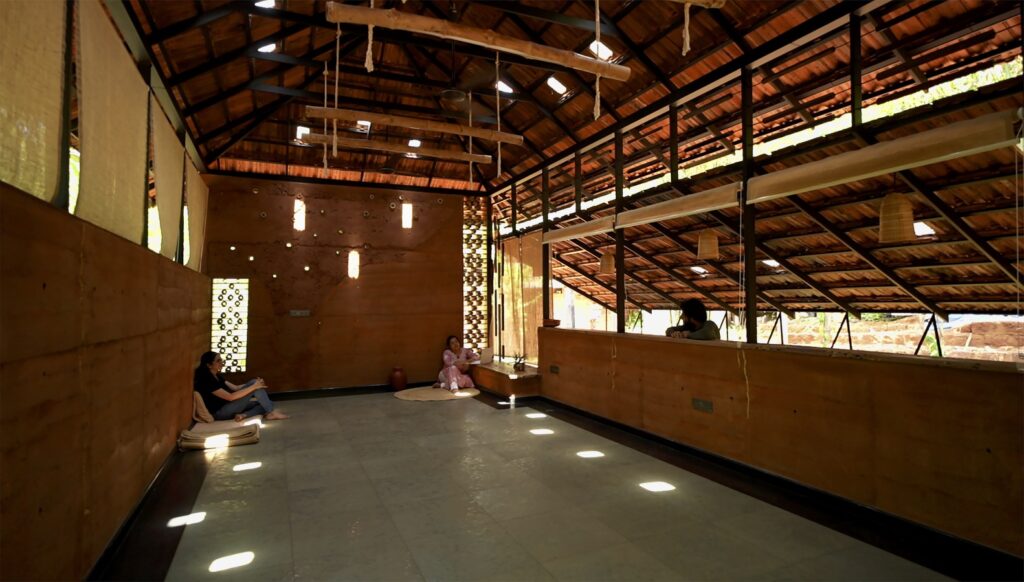
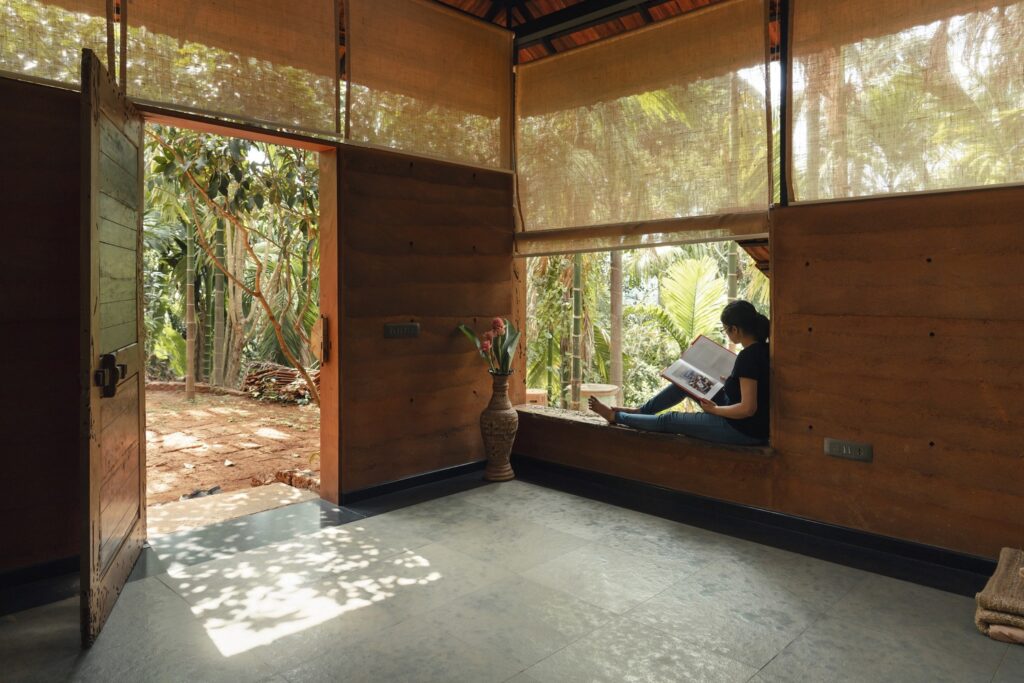
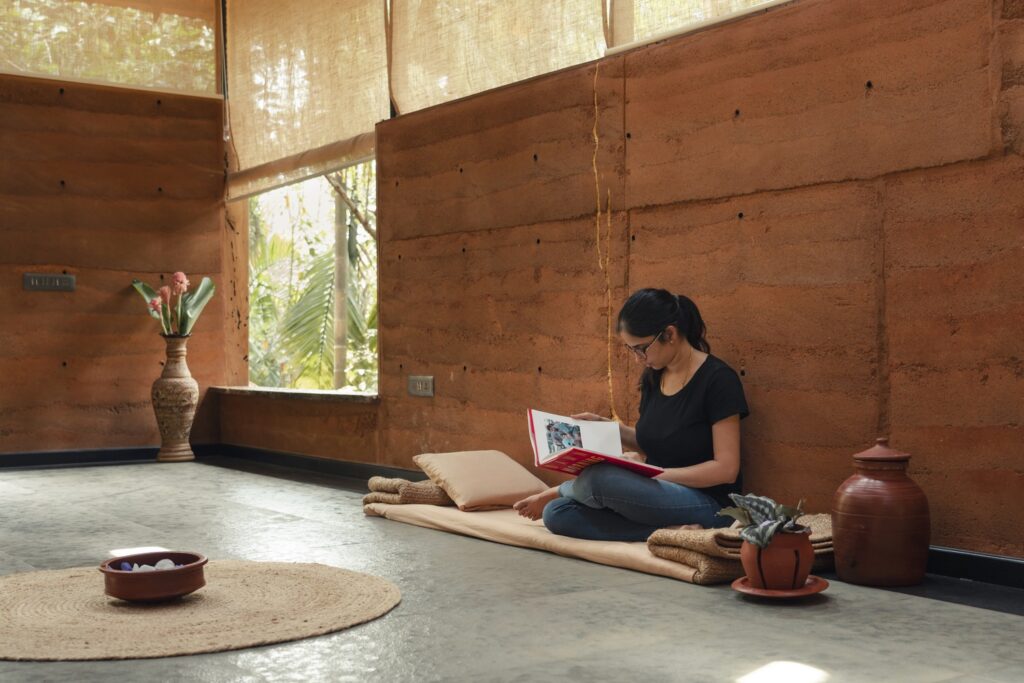
Using techniques like dry rubble masonry, rammed earth and shuttered debris walls, terrazzo and rammed earth flooring, and stone flooring, this building aims to make its spaces multi-functional and comfortable to reside in. The soil taken from digging the ground for the semi-basement store, and some existing waste laterite soil from the site, has been used to raise the rammed earth walls. However, gravel less than 8mm in size can only be used for rammed earth construction. As a result, the rest of the bigger chunks get discarded or wasted. To avoid this wastage, the bigger chunks were used for the store room walls in the form of Shuttered Debris Walls [a patented technique learned from Ar.Vinu Daniel, Wallmakers].

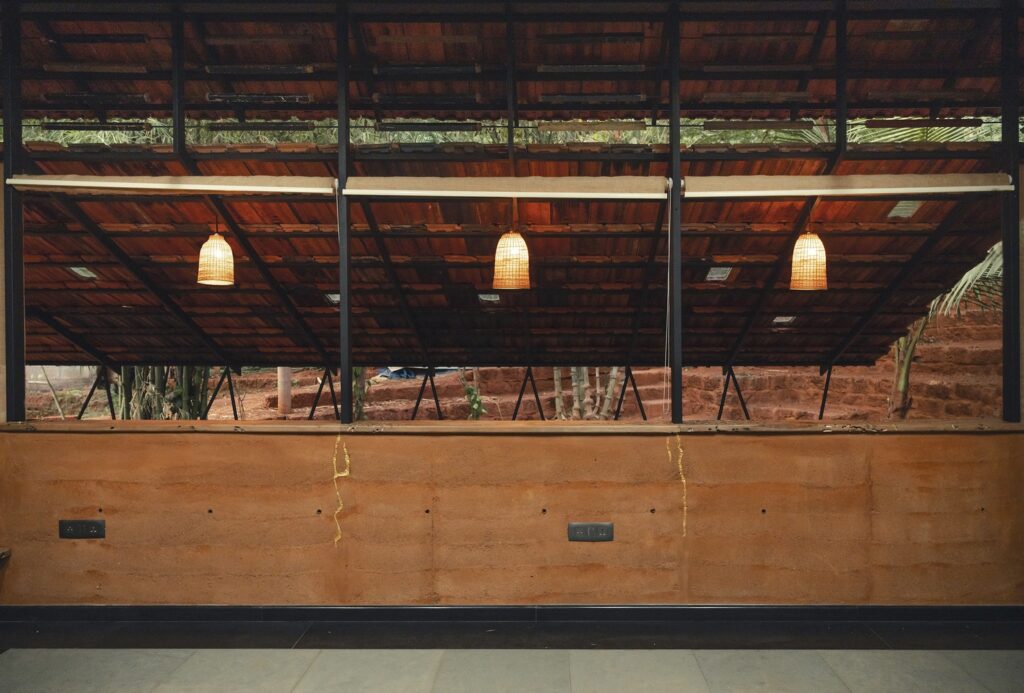
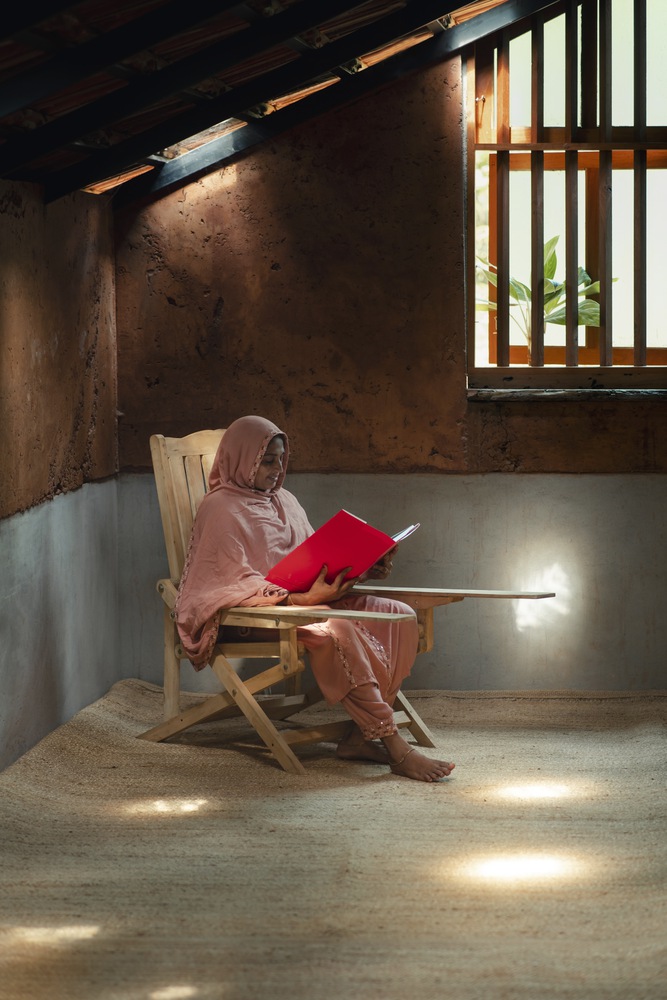

The main façade of the building showcases both dry and wet mud construction techniques. This wall also acts as an interesting backdrop for various performances indoors. The wall flaunts different textures that come from the same soil and hence celebrates the diversity that mud construction has to offer. In addition, a purposeful insertion of bamboo pieces into the wall aids in ventilation and creates a visual impact on the otherwise monochromatic wall.
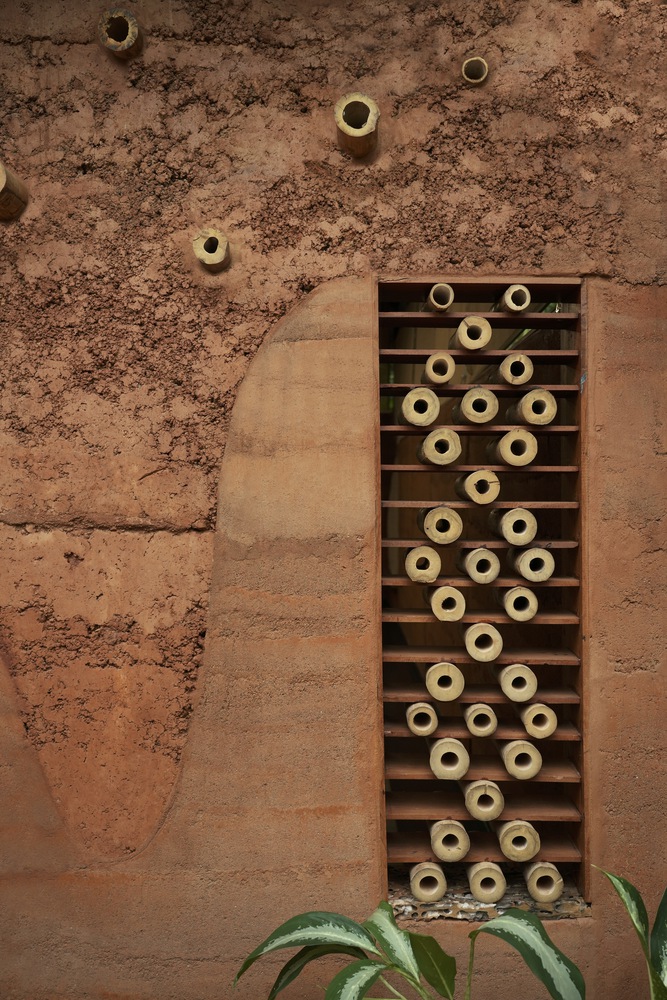
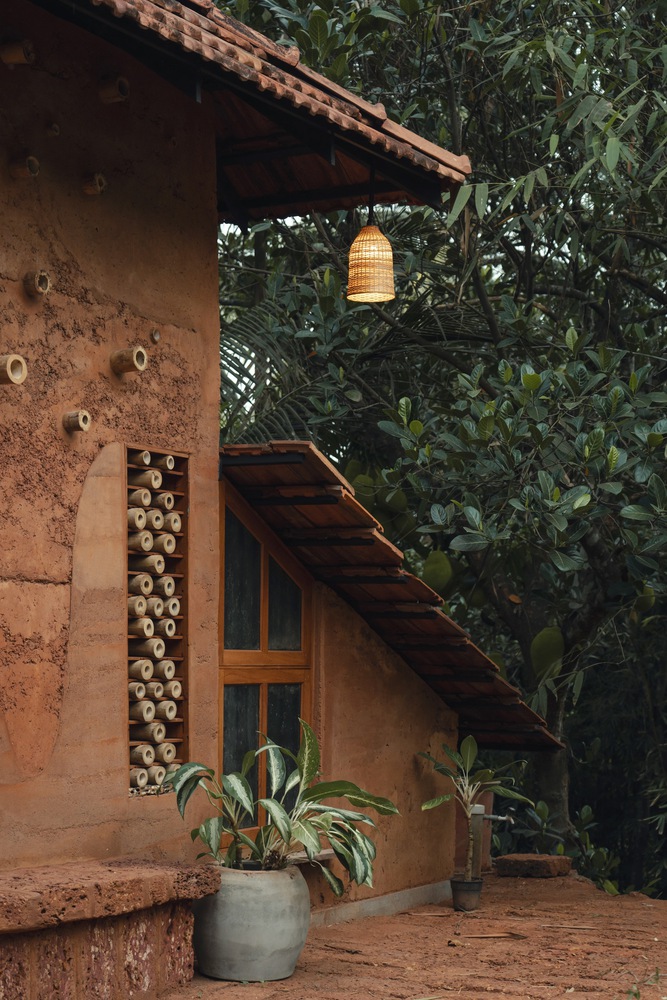
The windows, made of treated bamboo pieces and scrap wood, also contribute to the aesthetics of the facade. So, the walls hold their own identity, breathe freely, and stand for what “Shwasam” implies. One side of the hall has a short 1m wall to allow visual connection with the surroundings. The openness of the structure and high ceiling, which has clerestory windows all around, is designed to allow light and breeze into the space and to pull the hot air out, thus making the indoor temperature at least 4 degrees cooler than the ambient temperature.


Reduce Reuse Recycle
The main formula to make a sustainable and eco-friendly abode. In this project, waste has been Reduced by using the debris in shuttered debris walls. Old doors and old Mangalore roof tiles have been Reused. Waste wood, old-style glass, and Vala (window grills) have been Recycled and used for the seatings, doors and windows.
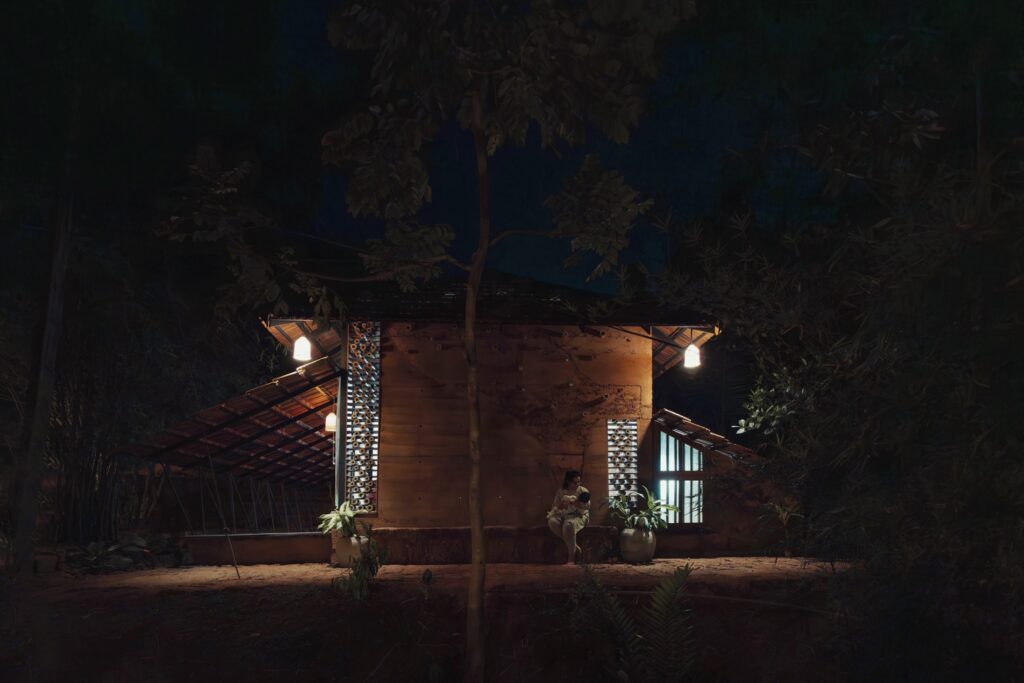
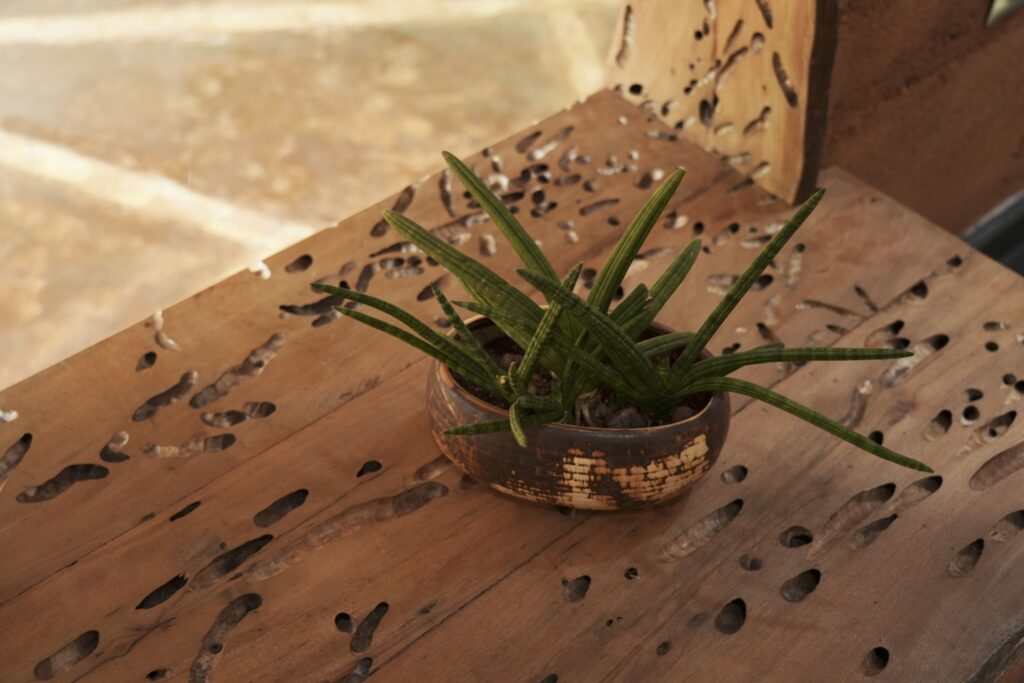
Project Drawings:
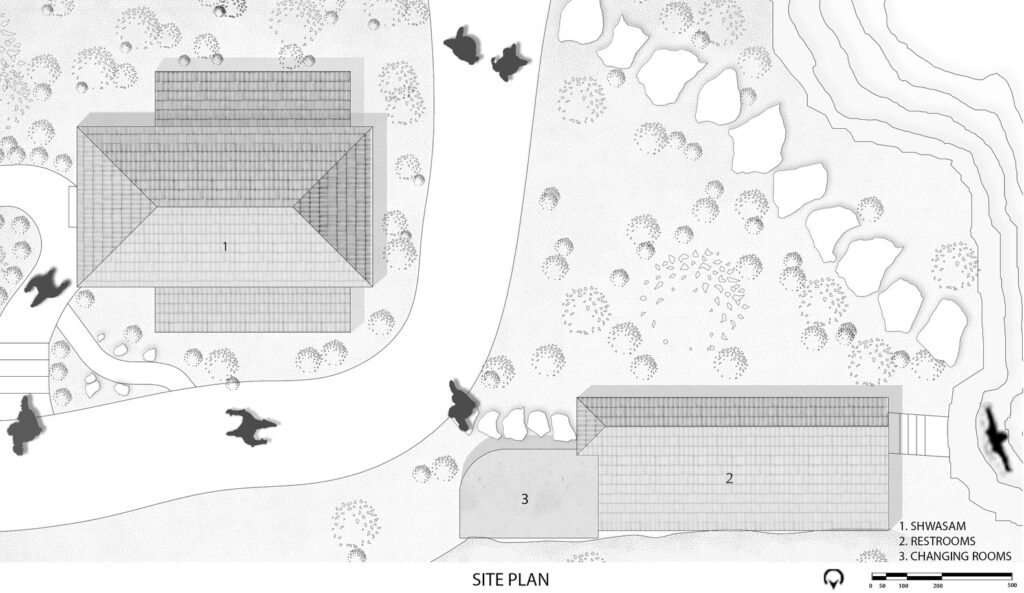


Projects Details:
Name: Shwasam Multipurpose Hall
Location: Aliparambu, Kerala, India
Status: Completed (2023)
Area: 850 sq. ft.
Designed by: ShriAbodes
Consultants:
Manufacturers: EBCO, Rhinoceros
Design And Site Supervision: Srivarshini JM
Masonry: Deepu and Team
Welding: Haridas, Unni
Photographs: Jino Sam






